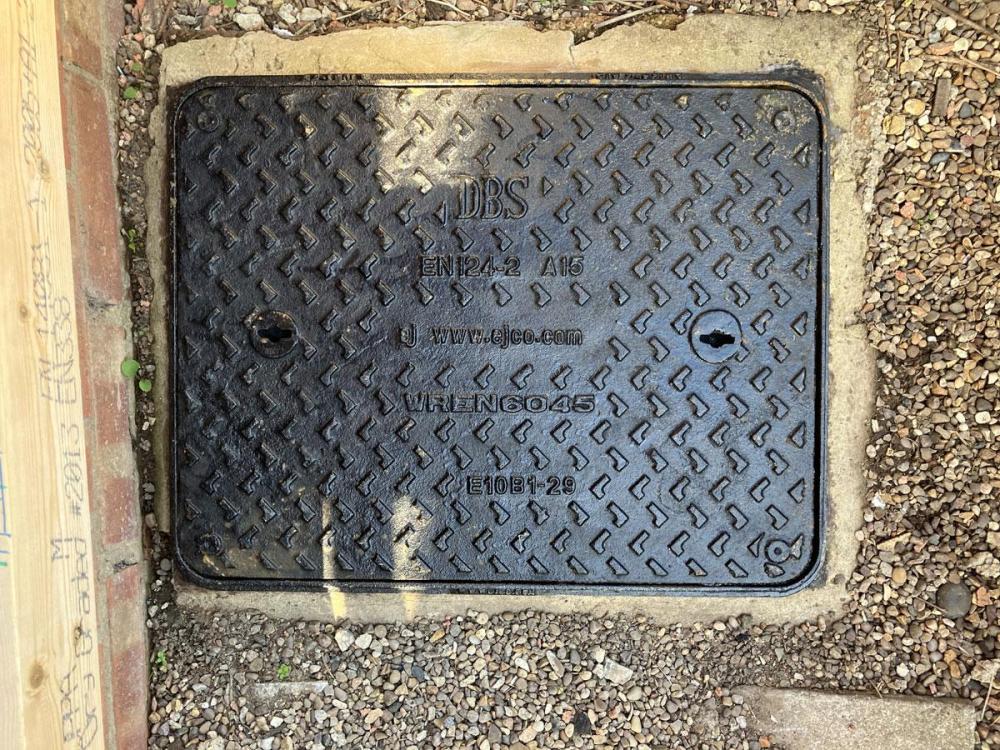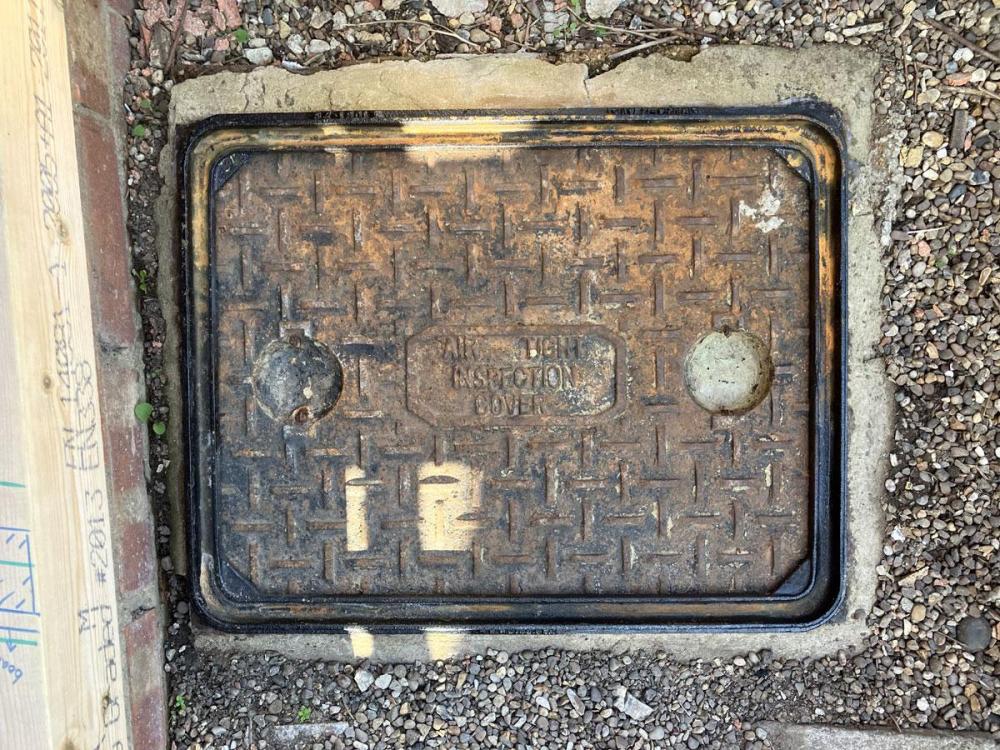Leaderboard
Popular Content
Showing content with the highest reputation on 09/27/23 in all areas
-
Well done having a go at this. Unfortunately it's not a simple task... I can see you have had a go at calculating the sliding resistance. Call this the global behavior of the structure. I have not looked at you calcs in depth but you are missing two vital things, the first is factors of safety, second and fundamentally when the wind hits the side of the building some goes round the sides and some over the roof. But there is already wind over the top of the roof so you need to squeeze this extra air into the envelope around the building. This increases the air velocity and particularly a flat roof starts to act like an aircraft wing and the roof lifts up. The uplift forces are large so you need to deduct this from the self weight of the structure. Now normally the sliding check is fine and not the critical check as say masonry structures are heavy.. bales less so. The structure could also hold together and overturn.. roll like a ball. My gut feeling is that even with a bale building this will probably not be the critical check. What I think will be the critical check it to make sure that the columns you are forming on the front elevation are able to carry the wind loads as individual elements. Around the sides of the door and at the corners you could get very big uplift forces.. unless you make the roof very stiff. In other words I think that even on a windy day the front wall will start to skew sideways (you also need to transfer what are called shear loads and the bales I don't think will do this well).. then you won't be able to open the doors... take this as an early warning you have got it wrong. To sum up the above. Wind loading is complex, there is a lot to it and the knock on effects are significant. For me.. you have a limited life structure, not occupied all the time.. you could compare this to an open sided farm building in terms of sideways stability (your front elevation with windows / doors), a marquee or similar temporary structure. When we design these we take a more pragmatic view, settlements are less important. What we say is we need to stop two main things happening. The first is that it does not suddenly collapse (without warning) and second is it does collapse say in the wind that bits don't fly away and hit people first and then other buildings ect. I think you really need to stop the front of the building moving sideways and will struggle with bales. One solution that springs to mind is to make the frame around the doors very stiff and strong so it resists the sideways forces. We do this when making big openings in the walls of buildings that are intended to hold things up and stop the building moving sideways. You door frame could be a portal (two columns and a top beam very well connected together) or a box frame, I think this may be best to look at first... the box frame You could make the structural door frame a feature to compliment your attractive design? To get your head round how the sideways forces work make a portal or box model out of 3 or 4 members.. bits of wood. Hold it at the bottom and push it sideways and see what happens. Look carefully you'll get a downwards load at one side and an upwards load at the other... this uplift load is the dangerous one! This load needs to be resisted by tying down. Encouragement! I bet there are loads of folk that would love to be able to do what you're doing and can see you are making a great effort. If you can do this for 3 -4k materials folk will chew your arm off! One way of really understanding this and how it will roughly behave is to get a cardboard box (or a few), cut holes in it to the scale of your windows / doors. Make a roof for it and pin / tape it with match sticks ( to represent your Hazel sticks) to the top of the box. Tape the thing to the dining table and start to push it sideways.. see what happens. This can be great fun for both adults and kids.. before you test it to destruction observe it first or you'll use a lot of boxes! This might sound a bit daft but this is how we teach SE's! Keep posting!2 points
-
You need a screw extractor set, something like this https://www.machinemart.co.uk/p/6-piece-screw-extraction-set-3---25mm/ You drill a pilot hole into the broken off stuck but then the screw extractor will bit into that pilot hole and unscrew it.1 point
-
1 point
-
1 point
-
Think that is built in with a 100 MPH wind at ground level. Getting a bit technical, the energy in a moving fluid as it hits an area is proportional to the cube of the velocity. So should not be too hard to do a rough calculation based on downward force and uplift. Then add in some safety because, as you rightly say, the failure mode is important. I tend to prefer a failure to be in very small parts, like a toughened windscreen. It can take quite a wallop before catastrophic failure, but after that, the main missile has lost a lot of energy, and the tiny bits of glass are so low energy that they are, in effect, intrinsically safe (maybe a few scratches).1 point
-
It seems there is. I found a couple of places, other than here, talking about it but I could find very little else. @JohnMo seems to agree there is a route. Now all I need to do is find it. I am hoping, as I need such a small device. I have all the plumbing, the base, the cables all in place. So I hope I won't need to find any cash. They turn up, plonk the machine on the base, connect up the pipework, controls, do the commissioning and go away. All done in a day. I bet it costs £7500 though!1 point
-
What's the direction the roof is facing? What's the pitch? Any shade? Even if you could squeeze 6 panels on there, would it be viable?1 point
-
Could have been covered with some walk on glazing. Wasn't there a bit floating about on here that would have fitted perfectly.1 point
-
Very snazzy. Any scope for digging it out a little to get the required concrete depth? You'll probably want to leave a gap on the edge opposite the door/window and put a slight slope on whatever you put down to channel water away from the building1 point
-
Hi, Thanks for access to the group. I'm Building a Scandinavian style home in the west of Ireland next year all going well. Got planning approved last week. Still deciding on MHVR systems, Solar Etc. Mike1 point
-
I am using Buildzone for their warranty and LABC for BC. LABC were far cheaper and (as I predicted) have been very responsive and helpful up to now. The Buildzone warranty inspector ( from Meridian Consult) was very much on the ball at foundation stage and had a brief glance at DPM / DPC. I won't see him now until the roof is on.1 point
-
Fáilte go dtí an forum! I'm quite a fan of scanhome (I assume that's the company you're using?) Which model have you opted for?1 point
-
Forget the readymix, just a couple of tonne bags of ballast and 12 cement needed. How is the rebar fixed to the posts? Make sure it is 32 or 40mm. Ducting between posts for automation. Be good if the posts were galv.1 point
-
1 point
-
Congrats - went to see their show house, looked very nice and almost a one stop shop. Love to the see construction photos if you're around onsite next year!1 point
-
Doesn’t seem to be? although I’m lucky that I’ve been accepted onto the second wave of 200 odd beta testers going live in the next 24 hours or so. The fact that they’re still going through testing very much suggests it’s not live as you said?🤷♂️1 point
-
A 40m duct run will require some very large diameter ducts. MVHR might not be the right option. I've two units due to the layout and size of our house. In hindsight would have preferred a single unit and compromised on dropping a ceiling or two to take the extra ducts.1 point
-
With pieces of metal welded to the parts of the post that will be in concrete to give extra strength.1 point
-
Look in to cascade ventilation (passivhaus institute is a good source of info) and coanda effect. You can easily have an outlet one end of a room and the effective ventilation the other end, using coanda nozzles. Two MVHR units work well doesn't have to cost much, just shop around.1 point
-
Double sheet the plasterboard 1st layer hides the expansion gap1 point
-
1 point
-
1 point
-
Dont do it! We are having problems with chimney full of foam (existing when we got house). A chimney balloon is apparently the correct method. Foam just causes damp issues & is complete nightmare to remove! Any clever solutions 4 removing very gratefully received!!1 point
-
The king post is actually in tension. This is why you will see iron bolts or straps, to account for the poor performance of timber connections in tension.1 point
-
1 point
-
That looks like a 1/2" male tap > 10 mm soft copper connection (probably comes with a thread for a 3/8" tap connector, a flat faceish coupling, and a special adapter to take 10 mm copper pipe) for a bog. You also get them for 1/2">1'2", 1/2">3/4", or indeed dual outlet for a kitchen basin and dishwasher simultaneously. Usually start with a 1/2" elbow: https://online.depo-diy.lt/product/24002 Into a 10 mm compression or 3/8" thread: https://online.depo-diy.lt/product/25638 1/2" thread: https://online.depo-diy.lt/product/25639 3/4" thread: https://online.depo-diy.lt/product/25640 Or combo units for doing a dishwasher and a kitchen sink: https://online.depo-diy.lt/product/25630 https://www.senukai.lt/p/ventilis-schell-kampinis-skalbimo-masinai-3-8-colio-isorinis-sriegis-1-2-colio-isorinis-sriegis-10-mm-suverziamas/302d?mtd=search&pos=regular&src=searchnode It may be easier to use a shower fitting even for a basin etc: https://www.ebay.co.uk/itm/322273391778 And a couple of hep2o adapters: https://www.screwfix.com/p/hep2o-plastic-push-fit-adapting-male-coupler-15mm-x-1-2-/5970f As that gives you more meat to screw to the wall. At the expense of more joints. If anybody wants a 1/2" to 3/8" BLACK valve I have one on my desk that's yours for a donation to the forum. Pocketed and Ryanaired for a friend only to find he wanted 1/2" to 1/2" doh! https://online.depo-diy.lt/product/3603801 point
-
I don't understand the question. Are you asking if there is a particular pitch suitable for these different products.? Nor do I understand how there is a parapet but no drainage. I should point out that I am not a fan of green roofs. What is your reasoning for having one? I think water should be got off a roof as efficiently as possible. To delay it going to increase flooding would be admirable but there are other ways. To sequester carbon and clean the air, I'm not convinced yours would end up on the right side of the +/- considerations, but will be glad to hear.1 point
-
Hi no we didnt in the end - just too much hassle trying to organise. Luckily we have no issues on the 150mm slab. It may have helped that we covered it with sheeting for a few weeks after the pour.1 point
-
isnt a choice for us western power will only fit 3 phase for new builds.1 point
-
When we purchased our plot in early 2020, I decided to do the conveyancing myself (as I'm basically a tight-arse). I didn't want to pay a solicitor to take months to do something I could easily do myself. Having completed that successfully, the purchase was finalised, and I then filled in the SDLT form and sent off a cheque for the tax that I believed was due. At that point, being aware that this was a second property, I calculated that we owed SDLT at the higher rate, so £5,000 on a plot purchased for £150,000. Skip forward to September 2022, perusing on Buildhub I discover that a building plot is not necessarily a residential property for the purposes of tax. News to me! I went back to HMRC's website, and learned that if the plot was non-residential, then the tax I owed would have been £0 (as the threshold starts at £150,001). As the plot we bought had previously been an agricultural field, prior to the vendor having obtained planning consent, then it was indeed non-residential for tax purposes. I contacted HMRC's helpline to discuss, and the chap I spoke to kindly explained that I could write in and ask them to repay me. I'm not sure whether he was aware or not, but at that point there was actually 0% chance of HMRC repaying us. The rules said that I had only 12 months from the date of completion (June 2020) to revise my SLDT submission. After that, tough luck. Any incorrectly paid tax would not be repaid. HMRC replied to my first letter, rejecting my request on the grounds that I had not quoted the piece of law I was relying on to ask for it. I then spent an entire weekend researching caselaw on situations such as mine. What an exercise in disappointment that was, to put it mildly. I read every single published judgement on SDLT cases for the previous 5 years, as well as the relevant regulations themselves, and concluded that there was simply no basis for me to persuade HMRC to repay us. I was crestfallen, and had to admit to HWMBO that I had gifted £5k to the Treasury out of my own ignorance, and my unwillingness to pay legal fees. Still, I decided that it was worth one final try, and I sat down in January to write the mother of all letters to try to persuade HMRC to repay us. I explained my mistake, cited the regulations, and asked if they could exercise discretion to allow a late amendment to the SDLT1 form on the grounds that they had themselves checked the form at the time and had not identified my error, despite there having been enough information on the form for them to have reasonably suspected that the property was not residential. I said that if they would not do that, would they please consider opening an enforcement case against us so that they could review whether we had paid the right amount of tax, and calculate for themselves what we owed (which was the only legal route that would allow them to revise the SLDT1 form beyond the time limit). Then I went for the heartstrings, saying that we really couldn't afford to gift this money to the Treasury, and if they could please see their way to reimburse us, we would be eternally grateful. A couple of weeks ago HWMBO found a credit in his bank account of £5089.00 with a reference of 'HMRC SDLT'. They had not only repaid us, but added interest for the time they had had the money. They haven't written to us to say why they decided to do this, so I've no idea which part of the letter was effective, but it feels churlish to question it. A very salutary lesson in there for me. And perhaps for some of you too.1 point
-
Thank you so much, I appreciate the link and advice!1 point
-
It does seem unfair that the Council can continue to collect rates until the Council determines a planning grant. What incentive do they have to hurry? I think a nice letter to your MP might be in order. Ask him to urge the Council to use any discretionary powers they have to grant an exemption for flood damaged properties that need to be demolished because repair is not economically viable.1 point
-
As I understand it before 2013 you could claim an exemption if the property was uninhabitable but think they did away with that to encourage empty properties to be brought back into use.1 point
-
We had a battle to get our house derated until we were allowed to demolish. You might be able to pull the widows out, remove heating, bathroom and kitchens. But this may not be enough and you might need to remove a wall or part of the roof to qualify. At that point you may get in trouble with planning enforcement for starting demolition without permission... We had extra complication of being in a conservation area, so even partial demolition was a big no. We ended up paying rates for two years on an empty house in North Down, and our current house at the same time ?1 point
-
If you have trouble finding your councils exemption page tell us the name of your council.1 point
-
Try your Insurance Co to see if they will pay it. Have a look at the Council Tax exemptions on your councils web site. Some say they will grant an exemption if your Insurance Company won't pay Council Tax. https://www.cheshireeast.gov.uk/council_tax/reductions/special-circumstances-council-tax-reductions-section-13a.aspx Other councils have different rules https://www.richmondshire.gov.uk/environmental-health/flooding/flood-damage-council-tax/1 point
-
0 points
-
0 points
This leaderboard is set to London/GMT+01:00
















